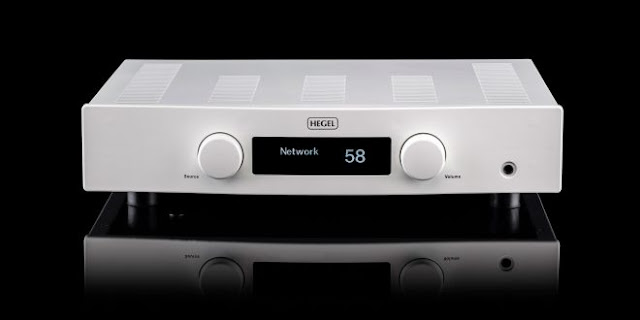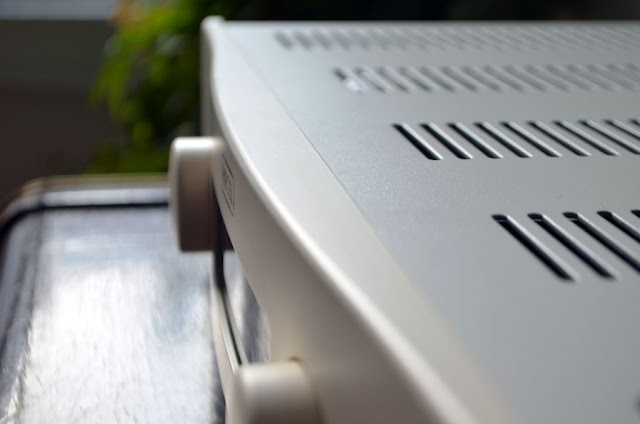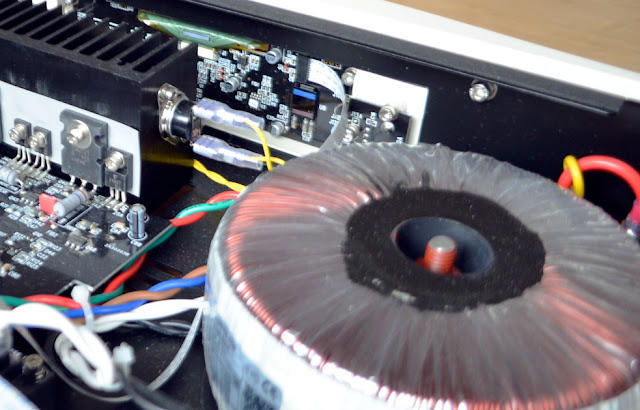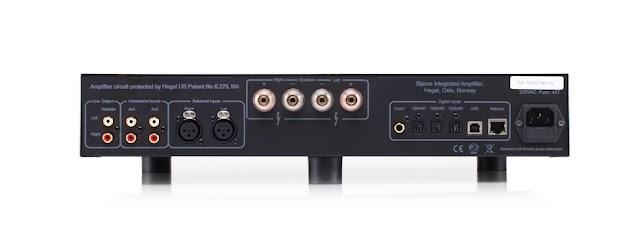Test Hegel Röst - integrated amplifier with DAC and streaming
These are fresh, exciting numbers: According to the GFU industry association , 1.7 million network-enabled audio components were sold in Germany in 2017. That was around eight percent more than in the previous year. A similar increase is forecast for 2018. Which proves: Without streaming, an audio product is difficult to sell. The Norwegians know that too: the heads of the Norwegian electronics specialist Hegel therefore designed the Hegel Röst integrated amplifier, among other things. A pretty device and a wonderful name that calls for all our chains of association with Scandinavia. And we are right: Röst is also the name of one of the most beautiful Norwegian islands, located quite far north in the Lofoten. So an idyll.
Which Röst also wants to offer: viewed from the outside, the eye primarily sees an integrated amplifier, slim and slender. Normally stripped down. There are only two buttons on the front: one for source selection, one for gain. To the right is a little hole for the headphone connection - that's it. All additional options are shown on the display in the middle. Here Hegel was no slouch. This is a wonderfully brilliant display in OLED technology. The overall construction is also pleasing.
The body of the Hegel Röst is made of steel, the front is made of aluminium, as are the selection buttons. Everything was colored in white. At first it was only available in this version, no black, no natural aluminum. The makers had to be very sure of their cause. But as it is: the hi-fi fan wants his black and so Hegel has also been offering the Röst in two colors since autumn 2017. But the really fine remote control (cut from a solid block of aluminum) is only available in one colour: black, of course...
On his website, Hegel reveals a lot about his in-house philosophy. This is not about data rates and formats, but primarily about performance values. So we find out that the Röst puts out double 75 watts at eight ohms - believable when you hear it. The promised range is also large: from 5 hertz to 100 kilohertz. In the honorable freestyle, we can also dock components with XLR cables.
Which raises the question of the core. What is the Hegel Röst in its deepest values? Apparently an integrated amplifier with flanking digital section. In addition to the Class A/B circuit for signal amplification, a circuit board with a digital/analogue converter was also installed. In the center is a DAC from the AKM with the abbreviation AK4396. This is decent quality, but not the pinnacle of converters. In the highest data yield, the Hegel Röst achieves 24 bits and 192 kilohertz. Which should be sufficient for most applications. DSD, on the other hand, is a foreign language for his DAC. As for so many other products. So no real drawback.
The fact that the roaster cannot convert ALAC, i.e. Apple Lossless, is completely different. ALAC is considered a not so irrelevant standard. For example, as a Mac user, I ripped all my music to Apple Lossless and bought all the high-res files in that format. The roast would be a big bad investment for me. This is particularly incomprehensible because Hegel also maintains an extensive connection via Apple AirPlay. For a better understanding: There are no technical barriers behind it, but simply a missing license - the Norwegian developers would be well advised to reach for the petty cash here and unlock Apple Lossless via update.
When asked about this irritating gap, Hegel Marketing Manager Anders Erzeid replied: “When developing the Roest, we assumed that every Apple user would normally use Air Play. We have therefore completely redeveloped AirPlay in Röst - and we are also certain that it is significantly better than Apple's own Airplay."
Hmm, maybe that's true. But that doesn't help streaming users who mainly use ALAC. Before buying the Hegel Röst, the willing owner must therefore ask himself in which form his music files are encoded. And if the answer is predominantly ALAC, he should flirt with the Hegel H90 or the H160; they can decode ALAC.
Let's change the direction of view - or the source. If you connect your CD player digitally, you can rely on the Röst's internal up-sampling. Here the data is increased to 24 bits and 192 kilohertz via Sync DAC. However, what I would have expected from such a smart amplifier as the Hegel Röst is a separate app. The absence is transfigured by Hegel as an intention: If you want to control the streaming amp via smartphone or tablet, you can use the pool of general control apps. On behalf of Apple, for example, Hegel recommends the Jriver app .
This is how the Hegel Röst sounds
How does the Norwegian sound? First, I selected three loudspeakers from the LowBeats test device pool: In addition to the LowBeats reference Wolf from Langa Chicago , on which every amplifier must show what it can do, the outstandingly neutral Dynaudio Contour 20 and the KEF LS 50 . The German Hegel sales company GPA likes to combine the KEF with the Hegel Röst. A €2,500 amp with a €1,200 box? Why not? The two also harmonize very well in terms of sound and the KEF LS 50 sounds like a lot more than it costs anyway...
The first test music I put on was the grand opera. In a literal sense: the orchestration of Richard Strauss 's Elektra is the maximum that an opera house can muster. In some houses the orchestra barely fits into the moat. The most brilliant of the recordings comes from the mid-1960s: Sir Georg Solti drives the Vienna Philharmonic into a frenzy of sound. The recording has just been released, freshly mastered – in 24 bits and 96 kilohertz. It just takes your breath away what the Decca sound engineers did back then. The new master sounds like it was recorded yesterday, completely noise-free and ultra-dynamic. On stage, it's all about survival from the first beat. The action rushes past us in real time. Strauss scratches the limits of tonality. There are swung axes and a matricide in the finale; at the height of her triumph, Elektra collapses dead.
Many an integrated amplifier breaks down with this music. Here you need full thrust and at the same time a knack for the subtleties. The singing voices have to detach from the axis of the speakers, at the same time the power of the double basses must not be curtailed. Hegel Röst performed this art with amazing mastery. There was really the best punch in the sound. In addition, the staggering in the orchestra was right, it was clear to hear where the Vienna Philharmonic let their woodwinds play: The roast convinces with a fine, large-format panorama.
Compare to what? For example, with the Magnat RV4 , which is also very smart in its own way - a tube/transistor hybrid for 3,000 euros, which, however, does not require streaming. The Magnat also has a DAC (Burr-Brown) that can scan data up to 24 bits and 192 kilohertz. So quite comparable to the roast. The magnate loved the full-bodied tones, toured from the bottom up. The roast, on the other hand, clearly scored with the better resolution, which was more intensive and informative, especially in the fine dynamics. Clear vote here for Hegel.
How does he bring these values to cultivated pop? To start, I played a stream from John Lennon. The ex-Beatles' solo work has been completely remixed and was released in 24-bit and 96 kilohertz. The Signature Box is a must for all fans. The roast showed all the splendor. The way he intoned the song "Mother" was at its best - you could feel the exact focus on the phrasing, and the roast perfectly followed Klaus Voormann's walking bass. Add to that the fine drive of the drums with Ringo Starr on the drums. There is no finer and more emotional resolution to this music; big compliments to the roaster.
Then "Cold Turkey" - John Lennon sings about his drug experiences. The rhythm guitar cuts out of the speaker axis quite martially, while the drums whip out. The Hegel Röst loved this sound and put a wonderfully catchy sound pattern in front of the loudspeakers. That was the best rock, extremely plastic and powerful.
Conclusion Hegel Rost
Hegel Röst wants to be loved. At its core, it is a powerful, colorful amp. All digital conversion appears more as an encore. So there are small weaknesses and big strengths. Too bad he doesn't understand Apple's Lossless format. This is a real shortcoming. But the data readout via FLAC works perfectly. The boost in the depths is wonderful - this amp understands the big, powerful sound.
















.jpg)


.jpg)



0 Comments